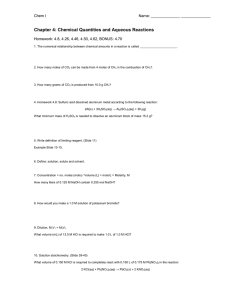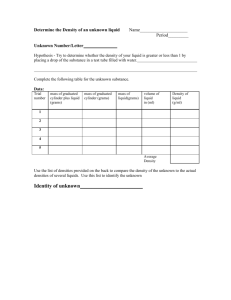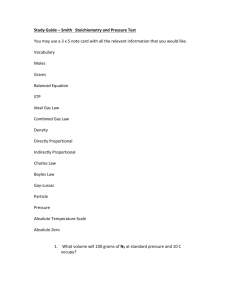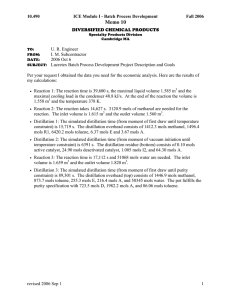Mass Mass
advertisement
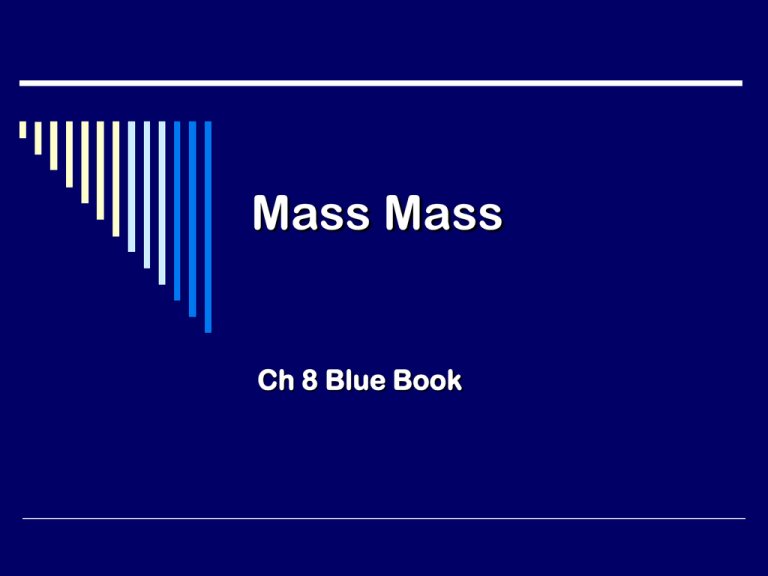
Mass Mass Ch 8 Blue Book Mass-Mass problems are done when we want to find the amount of a compound made from a known amount of another compound. Stoichiometry Example Zinc metal and hydrochloric acid react to form zinc chloride and hydrogen gas. How many grams of H2 are made from 10.0 g HCl? Step 1: Write out and balance the chemical equation. Zn + 2HCl ZnCl2 + H2 Step 1.5 – identify your known and unknown, draw an arrow going from your known amount to your unknown amount. Step 2: Convert grams of given mols Step 3: Determine mole to mole ratio from balanced equation & convert moles of given to moles of required (unknown amt. you are trying to find) Step 4: Convert moles of required (unknown) grams Zinc metal and hydrochloric acid react to form zinc chloride and hydrogen gas. How many grams of H2 are made from 10.0 g HCl? Zn + 2HCl ZnCl2 + H2 Answer: 0.27 g H2 Example Calculate the grams of NaOH required to produce 15.0 grams of Na2SO4 by the neutralization of NaOH with excess H2SO4. Step 1: Write & Balance Equation Step 1.5: I.D. known & unknown Step 2: mass of known mols of known Step 3: mols of known mols of unknown (Stoichiometric Ratio) Step 4: mols of unkown mass of unknown 8.45 g NaOH Example Washing soda (sodium carbonate decahydrate) is a hydrated compound used for washing, water softening and bleaching. If a sample of sodium carbonate decahydrate has a mass of 20.0 grams and 10.0% of this 20.0 gram sample is inert, what mass of sodium carbonate will be left when the material is heated to drive off the water of hydration? 6.67 g Na2CO3 HW Assignment #1-8 #9-16 Due 4/8 pg. 79 Due 4/10 pgs. 82-83
